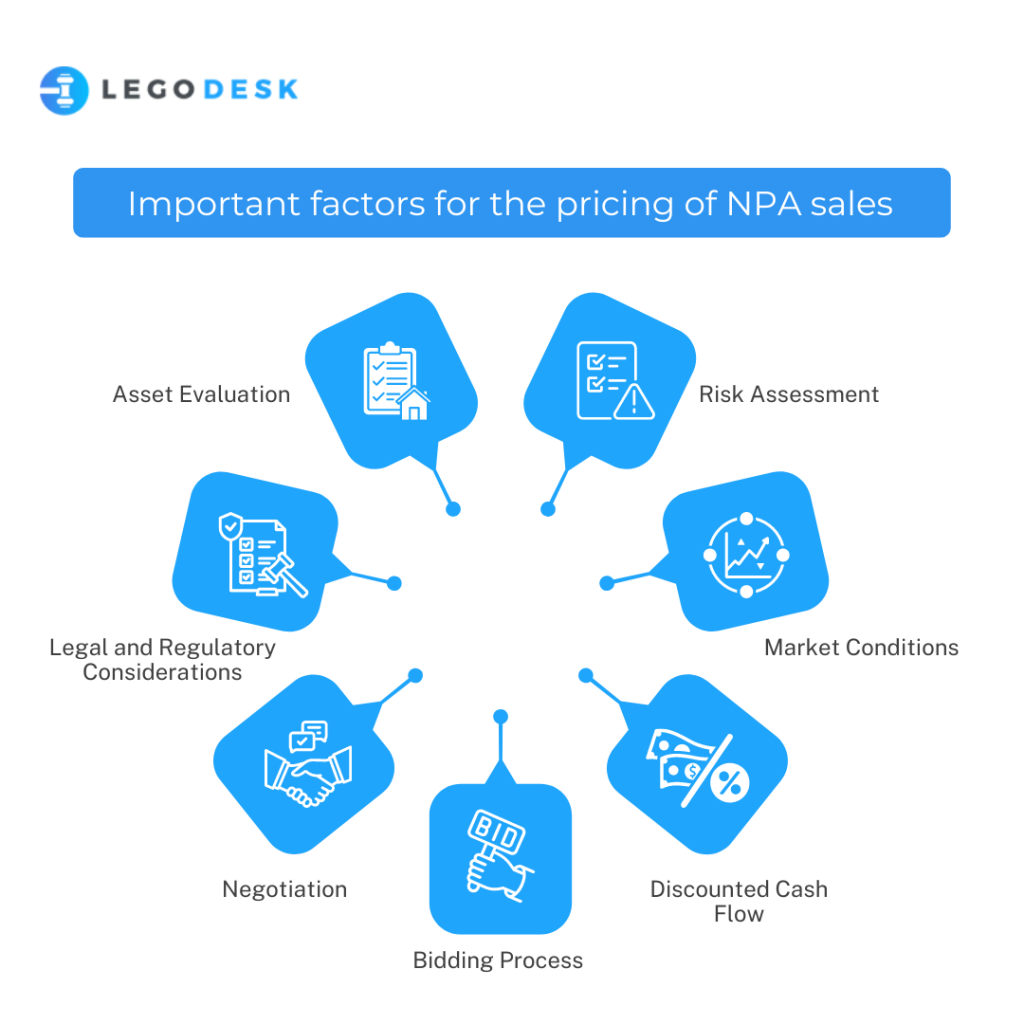Asset Valuation and Pricing in NPA Sales
Non-performing assets are an occupational hazard for lenders. There is no way to guarantee that loans are only sanctioned to borrowers who will service their loans without any defaults. This is because of the nature of commerce and the uncertainty that is part and parcel of life itself.
In such circumstances, every institutional lender will need to have documented processes in place for the valuation and pricing of non-performing assets so that they can be sold at an accurate price. There are many factors that govern NPA pricing and none of these factors can be overlooked.
Let’s dive into the most important factors that need to be considered for the pricing of NPA sales.

Asset Evaluation
The first step in NPA pricing is to ascertain the value of the underlying assets that have been used to secure the loan. This assumes that the NPA in question is a secured loan rather than an unsecured loan.
In case the NPA source is an unsecured loan then we may safely skip this step.
The valuation process of the underlying security depends on the type of asset that it is. For example, the valuation process of a piece of jewelry will differ from the valuation process of a parcel of land.
Further, lenders have the option of conducting the valuation in-house or outsourcing the work to an independent valuation professional or firm.
Risk Assessment
A core principle involved in the pricing of NPAs is the level of risk associated with the asset. Any buyer will first ask the questions, what is the risk that I am assuming when I purchase this asset?
For example, if the NPA is a secured loan then the level of risk associated with the NPA is much lower than if the NPA is an unsecured loan. Hence, the sale price of an NPA consisting of a secured loan will be higher than that of an NPA consisting of an unsecured loan simply because of the risk profile of the asset.
Market Conditions
The prevailing market condition can play a significant role in the pricing of the NPA. Factors such as the prevailing interest rate, the overall market sentiment reflected by the performance of the stock market, the level of public and private debt, and similar factors decide the condition of the market.
In a strong condition, there is likely to be higher demand for distressed assets since buyers have more ability to take risks. Conversely, in a weak condition, there is likely to be lower demand for distressed assets since buyers will have limited risk-taking ability.
Discounted Cash Flow
Next, we need to consider whether the NPA generates any cash flow. Most loans will generate a certain amount of cash flow even if they borrower is not meeting the deadlines. At least some payments will be made which will contribute to the cash flow being generated by the NPA.
Hence, when selling the NPA, the lender needs to account for the cash flow that is being generated today and also the cash flow that is likely to be generated in the future.
Bidding Process
The process through which the NPA is being sold may also determine the exact price of the NPA. Largely, NPAs held by institutions are sold through a competitive bidding or auction process. Other financial institutions participate in the process in an effort to purchase NPAs that can result in a boost to their cash flows and also generate a profit in the long run.
Hence, the enthusiasm or market sentiment during the bidding process can affect the actual price at which an NPA gets sold. The more bidders there are and the more appetite for the NPA that they have, the higher the price at which the NPA is likely to get sold.
Negotiation
As with any business transaction, there is a small but real role that is played by the negotiation process. Depending on the process through which the NPA is being sold, there may be room for negotiation between the buyer and the seller.
In such circumstances, the ability of the seller to sell the asset at a higher price can affect the actual sale price of the NPA. Similarly, the ability of the buyer to negotiate the terms will also play a role.
However, it is important that negotiation may not play any role in case the NPA is being sold through a bidding process.
Legal and Regulatory Considerations
The existing laws of the country in which the NPA is being sold will play a role in determining the NPA rate. Almost every country in the world has a set of laws that governs asset sales, that includes disclosure requirements, how the title is transferred, and whether any approval by relevant authorities is required.
There may be a certain cost attached to complying with these regulations which should be considered. Whether the cost is borne by the buyer or the seller will also depend on customs followed in the market.
Why Choose Legodesk?
Legodesk offers a premier software platform that can help lenders manage their loans. Our software boasts a range of helpful features such as legal notice automation, contact management, case management, feet on street app, and smart case allocation.
Through our software platform, lenders can increase the efficiency of their debt collection and loan management and manage their NPA list more effectively. We are trusted by institutional lenders such as banks and NBFCs and are preferred by enterprises.
Wrapping Up
The valuation and pricing of non-performing assets can be a cause of concern to lenders. There will be situations in which it makes business sense for a lender to sell the NPA. In such situations, the price which the NPA can fetch in the market plays a role in the decision-making process. Further, tax may also be a factor so gross NPA vs. net NPA also needs to be considered.
Overall, it is clear that the exact price will be difficult to determine before the fact. However, an analysis of the factors at play and prevailing market conditions can help lenders arrive at an estimate which can help with decision-making.

